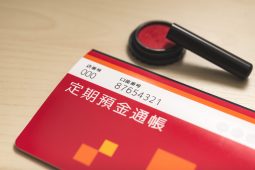Getting money into and out of Japan has never been easy. Since about two years ago, it’s been much harder. Banks everywhere have taken a policy of vetting every transfer — and the person and account making it — extremely carefully.
This goes double if you’re a freelancer like me, or otherwise have any kind of unconventional job or income. This part’s based on my personal experience in 2019: Three months first trying to transfer through the post bank (it pretty much can’t handle this, much as I love the post office for every other purpose), trying other banks and getting denied from even making an account, and finally going through about a month and a half of paperwork. That, after finding one bank that was not absolutely convinced that translating small bits of Japanese history for a journal abroad probably isn’t some kind of money laundering front.
The point is, although this was about getting money into Japan and not out of it, it’s my experience that all this is an enormous pain. So, let’s not do that. We’re going to look at some alternative methods that actually work and don’t give you nearly so much trouble: I’m going to need something like this myself in the coming months, so this is a bit of a learning experience for all of us.
So, let’s take a look at your options for sending money overseas, one by one. This article is mostly about sending, but I’ll have a bit about receiving money as well near the end. Keep exchange rates in mind at all times; they’re just a quick search away. American readers should probably know that in particular, the JPY->USD rate at the moment is unusually generous for the yen at the time of writing.
Now, about those options.
Standard bank transfer
No. Save yourself.
Paypal
You… could? Really, it beats trying an actual bank, but it’s going to be a bit of a hassle. Depending on the currency there might be extra charges, and at any point they might decide something about the transfer is suspicious and shut it down; that’s solvable with a few phone calls, probably, but maybe don’t go this route if it absolutely has to be timely? This has always been an issue with Paypal, and only moreso regarding Japan and in recent years. The real issue here is that it’s kind of a black box in a lot of ways. Having said that, its ubiquity and range of currencies works to your advantage, and it handles receiving money well too.It may not be your best option sometimes, but it’s always an option, which counts for a fair bit.
More info: https://www.paypal.com/us/webapps/mpp/bml-send-money
TransferWise
Not one I’ve tried myself, but a solid option as far as I can tell. Little fuss about it all, and they work fast, at 2–4 business days with a decent chance of being faster or even same-day. TransferWise is probably your go-to, with a handful of caveats. First, you do need to make sure all your paperwork’s in order (please, do this anyway), you have to make an account and give them time to make sure your paperwork is all sorted — a good reason to get your account made ahead of time — and most pressingly, if you want to transfer over 100,000 yen, Japanese regulations make sure that you have to jump through some extra hoops, a restriction that in my experience is a fair bit more relaxed for, say, Paypal.It has an international bank account of sorts too (but cheaper), and one of the cheapest fees around.
More info: https://transferwise.com/jp
GoRemit
The go-to standard before TransferWise came along, but a little more cumbersome.It works with only 11 currencies (USD, CAD, GBP, EUR, AUD, NZD, CHF, HKD, SGD, SEK and INR), has two flat fees — 2,000 yen normally and an added 1,500 if using Japanese Yen — that make it one of the pricier options, mails in its documents for you to sign and mail back, and determines your transfer caps at its discretion. Also, you need a few weeks to get any beneficiaries approved.It’s nice to keep in mind if you want a backup option, but there isn’t a whole lot to recommend it, and it’s a bit clunky all around. One thing recommending GoRemit is that if they’re not hitting you with a small transfer limit (again, it’s largely at their discretion), it’s not subject to the 100,000 cap (bypassed only with significant hassle) of other options. Though, neither is Paypal, to my knowledge.
More info: https://www.shinseibank.com/english/goremit/
Seven Bank + Western Union
I would like to thank my research for reminding me about the ’seven & i-holdings’ sign, and their bold decision to use the worst possible name post-merger. Anyway, technically you can just use Western Union for this. With just Western Union, the rates are competitive with TransferWise for the best around. With Seven Bank, it’s one of the worst; that’s all relative and so not as extreme as it sounds, but worth keeping in mind. So, why Seven Bank?
Well, if you already use Seven Bank, the integration saves you some hassle. If you use Western Union already, the choice is obvious, and you can transfer online too; encouraging, since I live in the middle of nowhere and have never seen a Western Union branch in my life, but apparently they’re more common in bigger cities. This is where I make the case that Seven Bank is conveanient since 7–11 is absolutely everywhere, but… if the alternative is handling this online, it may lose that edge of convenience, provided you’re with WU.
More info: https://www.sevenbank.co.jp/soukin/en/
Revolut
Only at the end because it hasn’t actually come to Japan yet (you have to join a waiting list), this seems like by far the most appealing option here.It emphasises speed and ease, which is pretty nice when our main worries are bureaucracy and things taking too long.It’s got a decent amount of security on your cards, works anywhere, lets you send payments near-instantly, tracks your spendings in case you wanted it to handle accounting too, takes no effort to set up, works from your phone, and so on. It’s all very nice, with one issue: You can’t, in fact, use it yet. I’d recommend going to their site, getting on that waitlist, and it should be ready around… well, the one thing I found said Q1 2019, so clearly we’ve gone off the rails a bit at this point. Hopefully soon, though.
Receiving money
Just a little footnote to all of the above, since it can be a bit of a different deal. If it’s coming from an individual person, or otherwise someone who doesn’t want to wrestle with large amounts of paperwork, then in my experience Paypal is one of the smoother choices, unless Paypal decide they would rather complicate things that day, at which point you might need to make a few calls. Generally, though, if your pay comes from an actual company, they have enough people making sure everything is properly in order that it won’t be your concern in any way. Sending money gets more complicated for most because you’re one person, but — for example — taking freelance work from abroad shouldn’t be as rough. Revolut may be helpful here as well, but I’m not sure it’s necessary.
Try to keep more than one option open just in case, and good luck!








